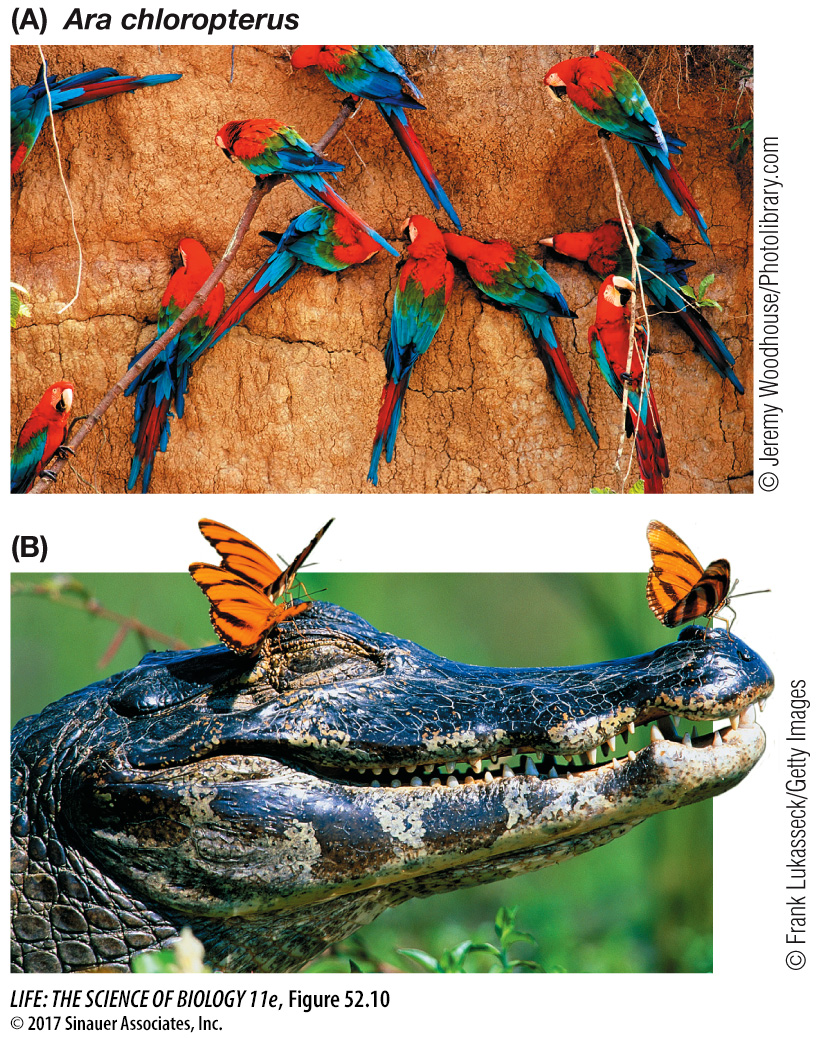Foraging behavior has costs and benefits
1126
Searching for food (foraging) involves many decisions: how much time to spend in each location, what is edible, and which potential foods should be eaten and which should be ignored. A cost–
Animation 52.2 Foraging Behavior
www.life11e.com/
1127
Animals frequently make choices among food items that may differ not only in terms of energy content, but also abundance or ease of acquisition and processing. Optimal foraging theory predicts that in such situations, animals will make choices that will maximize the rate at which they obtain energy. The more rapidly a foraging animal satisfies its energetic requirements, the lower the opportunity costs and risk costs of foraging.
The energy maximization hypothesis considers food items in terms of the energy they provide, but animals have nutrient requirements in addition to energy that can play a role in shaping their foraging behavior. Essential minerals, for example, are in short supply in some animals’ diets, and those animals may incur large energetic costs and risks to obtain them (Figure 52.10). Some foods may also be sought for their medicinal value. Chimpanzees, for example, have been observed eating the pith of the plant Vernonia amygdalina. The pith contains small quantities of a secondary metabolite (vernonioside B1) that is toxic to chimps at high concentrations, but at low concentrations can kill their intestinal parasites. Chimps that consume this plant material have fewer parasites.
